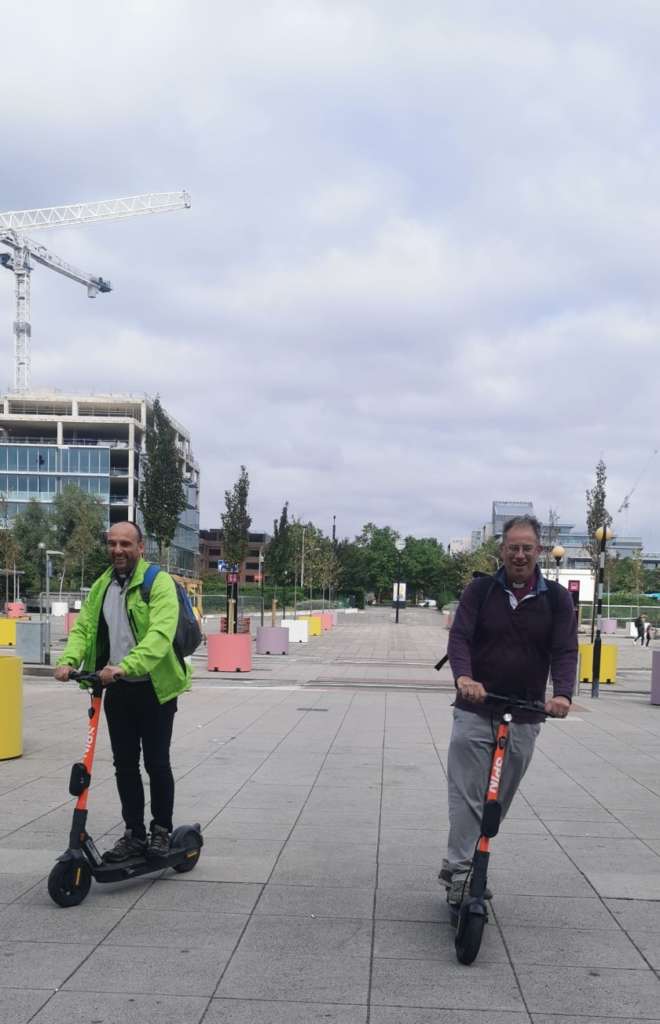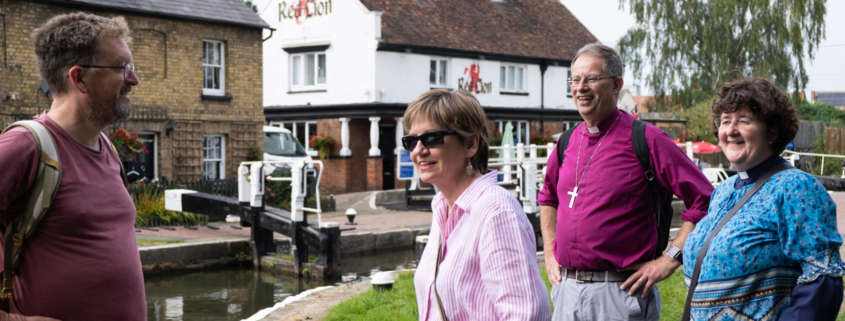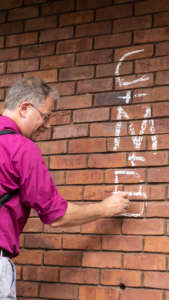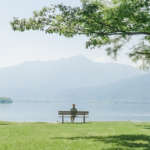It was so good to be on road and hedgerow again last week and to begin the new school year with a pilgrimage across the three deaneries of Buckingham, Newport and Milton Keynes.
We covered just under 60 miles with four days of walking and one of cycling along the red routes of Milton Keynes. Along the way, I was able to visit around 30 churches, many of them in small rural communities where the bishop of the diocese doesn’t often come to visit. The churchwarden in one church greeted me warmly by saying that in over 900 years of the life of the parish, I was the first Bishop of Oxford to visit (and what took me so long!).
 A chance to listen
A chance to listen
Lots of people came to walk a stage or two with me, and I think we mustered up to eight cyclists on the middle day. Lots more gathered in the churches – sometimes in twos or threes, sometimes many more, and probably several hundred all together. My thanks to all who came. Despite my chaplain’s firm instruction not to provide hospitality, there was sometimes cake to speed us on our way.
I listened as I walked. It was good to hear how things have been through the months of lockdown and as congregations regather. There were some difficult things, of course, many of them. But on the whole the wardens, licensed lay ministers and clergy I met were determined, hopeful, looking forward and thankful for many blessings received during the pandemic. As in previous years, I chalked a blessing on the doorways:
C+M+B
Christus Mansionem Benidicat
May Christ bless this House
Praying in the (mainly) ancient, quiet, beautiful places of worship was a blessing to me. As in previous years, I took a picture of the font in each church as my own way of remembering the journey and to lift up all of the ministry to children, young people and adults which flows in and out of our baptism.
I was given a fresh appreciation of the importance of rural churches and church buildings and the vital difference just one or two people can make to their life and witness. In the three market towns of Buckingham, Newport Pagnell and Olney, the churches are thriving hubs of life and service reaching out to young people, to refugees, to new families in the area.

Exploring Milton Keynes
I spent three days of the five focusing on the largest population centre in the diocese – Milton Keynes – and stayed over for two nights to be part of evening meetings as well. I’ve found it hard to get to know MK by driving in and through the city. Walking and cycling was much better. I came away with a renewed sense of the size and complexity of Milton Keynes; the beauty of the woods, waterways and green spaces, and the older villages with their ancient parish churches, which are at the heart of many of the communities.
Parishes in Milton Keynes can be larger than in any other place in the diocese, with 40,000 people and rising. Ministry and church resources are thinly stretched and the population is growing rapidly. It was good to visit the two new church planting hubs in Bletchley and Water Eaton, and a number of other churches planted in recent years as well, to notice areas where it will be important to increase investment in the coming years. There is a deep and moving commitment to ecumenism and it was good to pray and walk with Methodist, Baptist, United Reformed Church and Roman Catholic colleagues.
I had my first close encounter with a starship robot, the automated delivery service which runs across parts of the city, and my first ride on an electric scooter, currently being trialled in the city.
Emerging from the pandemic
And finally there were three special events through the week: a gathering for the churches to reflect on mission together as we emerge from the pandemic, a final service in Christ the Cornerstone with the presidents of the ecumenical partnership, and a powerful evening on the climate crisis, organised by MK Citizens UK with contributions from young people, scientists, the Open University, Network Rail, the Oxford-Cambridge arc and the local authority. It was great to see the climate rising up the agenda of the churches in various ways.
As always, I came away encouraged and refreshed by just dropping in on local churches and inspired by those who minister in them. The pilgrimage begins what will, I hope, be a year of visiting every deanery across the diocese again as we emerge from COVID to listen and to encourage the Church to be the best we can be in this time, for the sake of God’s world.
Thanks to all who took part and to all those who helped to organise the journey.
Bishop Steven
You can see the full photo journal of Bishop Steven’s pilgrimage on his Facebook page.


 A chance to listen
A chance to listen
